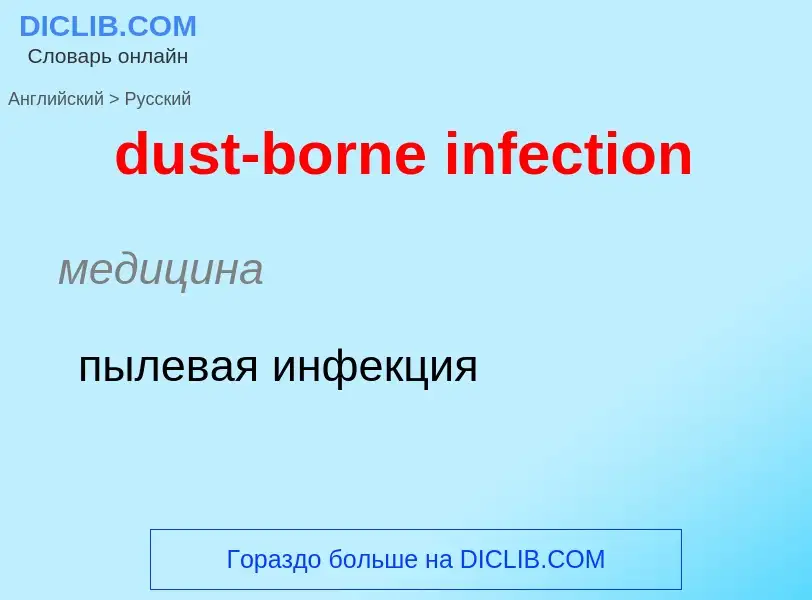Vertaling en analyse van woorden door kunstmatige intelligentie ChatGPT
Op deze pagina kunt u een gedetailleerde analyse krijgen van een woord of zin, geproduceerd met behulp van de beste kunstmatige intelligentietechnologie tot nu toe:
- hoe het woord wordt gebruikt
- gebruiksfrequentie
- het wordt vaker gebruikt in mondelinge of schriftelijke toespraken
- opties voor woordvertaling
- Gebruiksvoorbeelden (meerdere zinnen met vertaling)
- etymologie
dust-borne infection - vertaling naar russisch
медицина
пылевая инфекция
общая лексика
космическая пыль
Definitie
Wikipedia
A blood-borne disease is a disease that can be spread through contamination by blood and other body fluids. Blood can contain pathogens of various types, chief among which are microorganisms, like bacteria and parasites, and non-living infectious agents such as viruses. Three blood-borne pathogens in particular, all viruses, are cited as of primary concern to health workers by the CDC-NIOSH: HIV, hepatitis B (HVB), & hepatitis C (HVC).
Diseases that are not usually transmitted directly by blood contact, but rather by insect or other vector, are more usefully classified as vector-borne disease, even though the causative agent can be found in blood. Vector-borne diseases include West Nile virus, zika fever and malaria.
Many blood-borne diseases can also be contracted by other means, including high-risk sexual behavior or intravenous drug use. These diseases have also been identified in sports medicine.
Since it is difficult to determine what pathogens any given sample of blood contains, and some blood-borne diseases are lethal, standard medical practice regards all blood (and any body fluid) as potentially infectious. "Blood and body fluid precautions" are a type of infection control practice that seeks to minimize this sort of disease transmission.


![Cosmic dust of the [[Andromeda Galaxy]] as revealed in infrared light by the [[Spitzer Space Telescope]]. Cosmic dust of the [[Andromeda Galaxy]] as revealed in infrared light by the [[Spitzer Space Telescope]].](https://commons.wikimedia.org/wiki/Special:FilePath/Andromeda galaxy Ssc2005-20a1.jpg?width=200)


![Cosmic dust of the [[Horsehead Nebula]] as revealed by the [[Hubble Space Telescope]]. Cosmic dust of the [[Horsehead Nebula]] as revealed by the [[Hubble Space Telescope]].](https://commons.wikimedia.org/wiki/Special:FilePath/Horsehead-Hubble.jpg?width=200)



